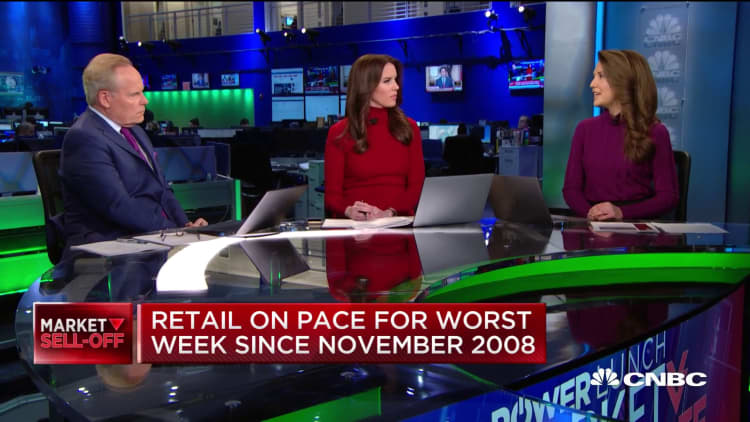Does it ever feel like your neighborhood strip centers are transforming into endless rows of nail salons, pizza joints and gyms?
If you are thinking it, you likely are not imaging it. These storefronts are popping up all over — in malls, downtown and throughout suburbia.
The number of service-based retailers — a category that includes a Dave & Buster's entertainment venue, a local spa and nail salon operator or a Cheesecake Factory restaurant — surged 20.5% from 2002 to 2017, totaling 1.2 million spaces, a new report from commercial real estate services firm JLL found. Retailers selling goods — such as a Gap or Victoria's Secret — fell 4.5% to 1.1 million shops during the period.
Taking those shifts into account, service tenants now make up 52.6% of America's retail space, while companies focused on selling goods account for 47.4% of space, JLL said. In 2002, retailers selling products made up 53.2% of physical retail, it said. But that number has been shrinking ever since.
The growth in service-based businesses "will plateau at some new percentage," said James Cook, director of retail research at JLL. "But [retail] is not going to go back to the way it was."
"We are looking to services to be the occupiers," he added.
To some, it won't come as a shock that these service-oriented businesses are growing, while companies that sell things like dresses, handbags, shoes and home goods are scaling back their growth — or going out of business altogether.
Within the past year, retailers including Pier 1 Imports, Barneys New York, Forever 21, Charming Charlie and Charlotte Russe have filed for bankruptcy protection. These retailers, among others, have also shuttered thousands of stores.
As more people shop online, stores need to offer something that cannot be bought or experienced on the internet. Amazon is stealing transactions. Its share of e-commerce sales in the U.S. is estimated to grow to 38.7% in 2020, up from 37.3% in 2019, according to data pulled by eMarketer.
Big-box companies like Walmart and Target, meantime, are ringing up more purchases on their websites. Target's ranking among the top online retailers in the U.S., for example, has pushed it to the No. 8 spot from No. 11 in 2019, eMarketer said.
In a bid to stay relevant, some retailers are experimenting with smaller, temporary formats, JLL's Cook added. More brands are finding it beneficial to open up a space for a limited period of time to test a market or a new product, without committing to a five- or 10-year lease. The pop-up industry is estimated to bring in $50 billion in annual sales.
"Now more than ever, you are seeing the importance of the ... things you cannot replicate online," Cook said.



